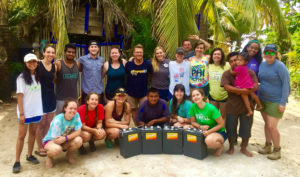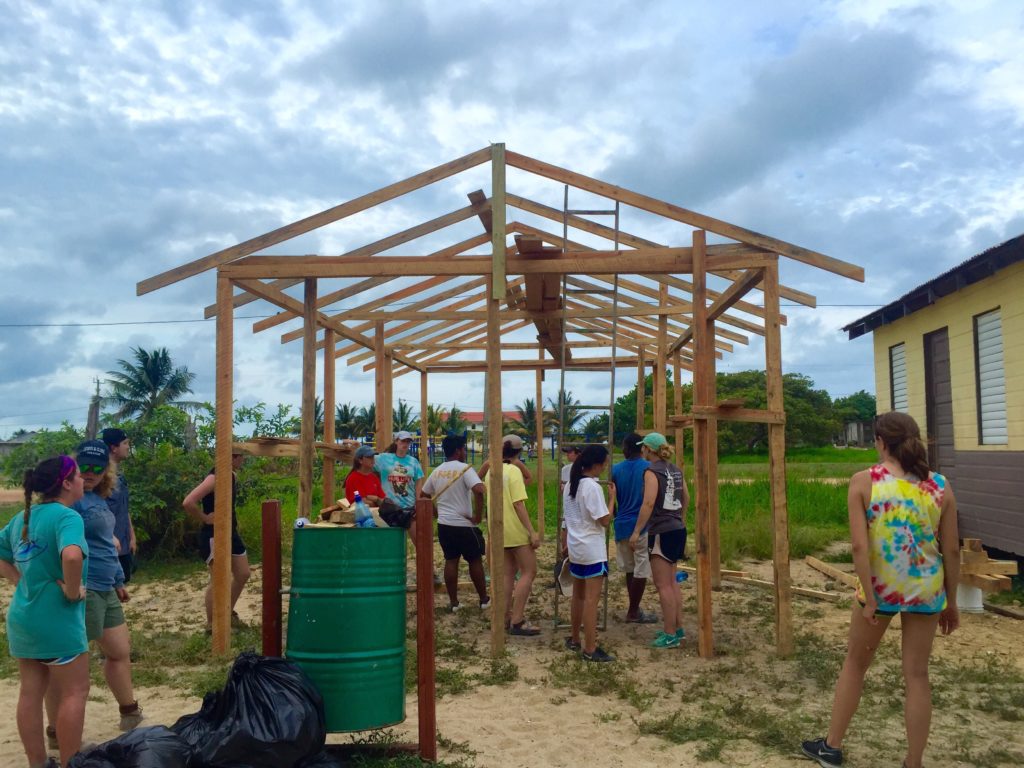This is a guest post written by Lauren Wright, Quest’s spring semester engineering intern from Georgia Institute of Technology (Georgia Tech).
Service is about giving – giving your time, your blood, your sweat, your tears to a cause you believe in. Service is being selfless and generous towards others and expecting nothing in return. The most important part is expecting nothing in return. The difference between a job and service is that expectation.
When we work or serve, we strive to succeed, to see the efforts of our labor come to fruition. In the professional world, we take our success and run with it, whether it’s putting food on the table or moving up the corporate ladder. It’s something we expect from our efforts, and that’s not a bad thing. When we serve, however, our efforts are meant for someone else with no material gain for self. When serving, we should keep in mind what is best for the receiver, not what we perceive is best. How can we know what’s best for someone without first understanding the way they live? Before this summer, I hadn’t thought about service in this way.
This summer I had the opportunity to travel to Belize on an Alternative Service Break trip through a Georgia Tech partnership with the non-governmental organization 7 Elements. We planned to install solar panels in a handful of Mayan communities as well as build a sun shelter for a school in Hopkins, the small, coastal village where we stayed during our visit. This trip stood out to me more than other service opportunities I’ve participated in for two reasons:
- During spring semester, I was an intern for Quest Renewables, a solar racking company based in Atlanta. I enjoyed every second I was at Quest. The team is a family in the best of ways, making time to celebrate birthdays and bring soup to sick employees, while at the same time being a motivated group of professionals dedicated to their customers and projects. My incredible experience at Quest sparked my excitement for solar power and showed me the powerful effect it has in communities. I learned the basics of panel components, installation, structures, and gained a rough knowledge of wattage and energy needs. When I told them about the trip, they were excited for my opportunity to share what I had learned in a serving capacity.
- When I told my family about the trip and expressed interest in going, my dad told me a story about my grandfather I had not heard. In the 1980’s my grandfather had worked in Belize City constructing power plants. I was to be the 2nd generation of my family to travel to Belize and bring power to those who needed it, and that was too great to pass up.
Upon our arrival to Belize City, everything changed. Our leaders reviewed the itinerary and told the trip coordinators we could do more. So, we did. Instead of installing solar panels, we had the opportunity to go into the remote Mayan communities of Medina Bank and Indian Creek to run diagnostics to help figure out what the communities needed. We spoke with the Mayan people – men, women, and children – in their homes and asked them what they would like to see changed. They showed us their meager belongings, sharing practically everything they had. I got the opportunity to lead a conversation with the woman’s council. They shared their desire for electricity for their children to study at night and clean water to prevent water-borne illnesses. We also met with the village council and the Alcalde and spoke about their damaged hurricane shelter as well as how the addition of a farm road would cut production time of valuable crops in half. These meetings were a privilege for our group; the Mayans are hard workers with little free time. The men met with us after finishing a long day in the fields and the women took care of their children while talking with us.
Our goal was not to force technology upon the Mayans, but rather to understand their needs and desires and propose innovative, self-sustaining solutions. In the evenings, our group discussed what we learned and drafted plans for possible implementation, pending the approval of the Alcalde. Because of my background with Quest Renewables, I chose to focus on the solar solutions.
There are various challenges when you begin to implement solar in remote areas. For starters, you need to determine the energy capacity needs and develop a system that meets those needs with a reliable power source. Next, if the solution is electricity for all, how do you determine who gets access first? You also need to determine if connecting to the grid is an economical solution for the community. Furthermore, you need to identify a person in the community who can troubleshoot panel problems and pay for any needed repairs. As a group, we ended up recommending a design of small community centers interspersed in both villages where basic power requirements could be met for multiple families. These centers would double as solar producers and shelters to provide protection from the elements. Other groups proposed a similar design that added a rain water capture system, mosquito nets, and community water stations.
Whether these ideas will be implemented, we don’t know yet. The problems this area faces cannot be solved in one day or by one group of 14 college students, but we did start the conversation. A recurring problem in developing countries is that groups visit and promise life-altering changes and then vanish. Indian Creek has had numerous organizations promise to clean up their water supply and never take action. It took much convincing to gain access to the communities because the Alcalde did not want to unnecessarily raise the Mayan’s hopes. However, 7 Elements is committed to Belize. They were in Belize again this past week with a group of high school students starting the next phase of projects, and three more groups will travel to Belize before the end of the year.
I learned a lot in Belize about the world, about service, and about myself. I made lasting bonds with people from all over the world. I got to see some incredible sights: the most beautiful coral reefs, Mayan Temples thousands of years old, and wild tropical jungles. I tried strange vegetables and Mayan dishes that were unlike any flavor I had ever tasted. Most importantly, I left knowing that I had been a part of something much bigger than myself, something I will take with me for a long time.

